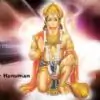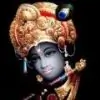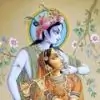When did I say I don't believe in Ram or Krishna. I only said it's inappropriate to look into religious issues through scientific view as both are completely opposite in its reasoning and manipulation.
In hinduism or 'Sanatana-dharma' as its popularly known now-a-days Religion and science are NOT different!
they tried to relate the verses of old sanskrit text with mordern research, some time they successfully explained but at the other time when cross questioned failed because of lack of strong foundation. For example string theory says that there is a fundamental particle negligible in size, are thought to be excitation modes of elementary strings. However, the strings in string theory are floating in space-time. Nonetheless, they have tension. and the same is written in one of our scripture that whole of the universe woven in string. so people went on comparing the theory with scripture.
We are used to thinking of fundamental particles (like electrons) as point-like 0-dimensional objects. A generalization of this is fundamental strings that are 1-dimensional objects. They have no thickness but do have a length, typically 0.000000000000000000000000000000001cm [that's a decimal point followed by 32 zeros and a 1]. This is very small compared to the length scales that we can reasonably measure, so these strings are so small that they practically look like point particles.
Now what some of our ancient scriptures say about the elementary composition of this 'Universe'.
"Sun and the rest of the universe are woven in string. What is that string that is Vayu." (Shatapatha Brahmana (8.7.3.10)
Kathashruti 2.2 says that Vayu has entered the universe and taken the shape of every object in the universe.
Now please don't translate the meaning of 'Vayu' to be 'air' because in Vedic Sanskrit 'Vayu' is some thing different. 'Vayu' is something, which is all pervading. Shatapatha Brahmana gives a definite clue as to the meaning of 'Vayu' when it says that 'What is that string is Vayu'. It further says that whole universe is woven in 'String'. Now haven't you heard some thing similar being discussed by 21st century physicist when they discuss the 'String Theory'.
Some people may laugh and say it is a long shot and those ancient people may just have mentioned something like 'String' by mistake. Well before rejecting what those 'ancient people' said it would be worth for any intelligent person to read some of these ancient scriptures after learning Vedic Sanskrit. Then you can come to your own conclusions.
But as far as Quantum physics is concerned the scripture has completely failed to prove even a part of it. This is one of thing questioned while relating science with scriptures that why hindu scripture is unable to describe quantum world.
Are you sure, have you read all the scriptures😉. Do you know about Austrian physicist Erwin Schrodinger, who was arguably one of the two greatest scientists of the 20th century. If Albert Einstein is celebrated for his creation of the theory of relativity, Erwin Schrodinger is equally famous for his creation of quantum mechanics, the deepest theory at the basis of outer reality. Quantum mechanics went so far beyond the already radical framework of relativity that Einstein refused to accept it to his last day.
It is a fact that the great European scientists have searched for truth by first abandoning the narrow theologies of the religion into which they were born. But for Schrodinger Indic ideas provided the very foundation for his uncompromising search for meaning.
It is not generally known that before he created quantum mechanics he expressed his intention to give form to central ideas of Vedanta which, therefore, has had a role in the birth of quantum mechanics. In 1925, before his revolutionary theory was complete, Erwin Schrodinger wrote:
- This life of yours which you are living is not merely a piece of this entire existence, but in a certain sense the "whole"; only this whole is not so constituted that it can be surveyed in one single glance. This, as we know, is what the Brahmins express in that sacred, mystic formula which is yet really so simple and so clear: tat tvam asi, this is you. Or, again, in such words as "I am in the east and the west, I am above and below, I am this entire world."
- The unity and continuity of Vedanta are reflected in the unity and continuity of wave mechanics. In 1925, the world view of physics was a model of a great machine composed of separable interacting material particles. During the next few years, Schrodinger and Heisenberg and their followers created a universe based on superimposed inseparable waves of probability amplitudes. This new view would be entirely consistent with the Vedantic concept of All in One.
According to his biographer Moore, "His system -- or that of the Upanishads -- is delightful and consistent: the self and the world are one and they are all. He rejected traditional western religious beliefs (Jewish, Christian, and Islamic) not on the basis of any reasoned argument, nor even with an expression of emotional antipathy, for he loved to use religious expressions and metaphors, but simply by saying that they are naive."
Schrodinger was a professor at several universities in Europe. He was awarded the Nobel Prize in 1933. During the Hitler era he was dismissed from his position for his opposition to the Nazi ideas and he fled to England. For some years he was in Ireland, but after the conclusion of the World War II he returned to Vienna where he died in 1961.
Quantum mechanics goes beyond ordinary logic. According to it reality is a superposition of all possibilities which restates Vedic ideas. It is quantum mechanics which explains the mysteries of chemical reactions and of life. In recent years, it has been suggested that the secrets of consciousness have a quantum basis.
In a famous essay on determinism and free will, he expressed very clearly the sense that consciousness is a unity, arguing that this "insight is not new... From the early great Upanishads the recognition Atman = Brahman (the personal self equals the omnipresent, all-comprehending eternal self) was in Indian thought considered, far from being blasphemous, to represent the quintessence of deepest insight into the happenings of the world. The striving of all the scholars of Vedanta was, after having learnt to pronounce with their lips, really to assimilate in their minds this grandest of all thoughts."
He considered the idea of pluralization of consciousness and the notion of many souls to be naive. He considered the notion of plurality to be a result of deception (maya): "the same illusion is produced by a gallery of mirrors, and in the same way Gaurisankar and Mt. Everest turned out to be the same peak seen from different valleys."
Schrodinger's ideas continue to be fundamental in a variety of new fields. The wonders of modern science, such as electronics, biology, chemistry, wouldn't have been possible without the insights of quantum theory. The possibilities inherent in quantum theory have not all been realized. Schrodinger remains one of the most discussed figures in modern scientific thought. His ideas will continue to inspire science.
Schrodinger was a very complex person. But he had a sense of humor and paradox. He called his dog Atman. Perhaps he did this to honour Yudhishthira whose own dog, an incarnation of cosmic justice (Dharma), accompanied him on his last march to the Himalayas. More likely, he was calling attention to the unity that pervades the web of life.
It is frustrating to note that the Indian educational system will not let students know of the centrality of Vedantic thought in the works of scientists like Schrodinger or our own Jagadish Chandra Bose. Is it possible that at some future time Indians will have to travel to the West to know about their own heritage?😕



























